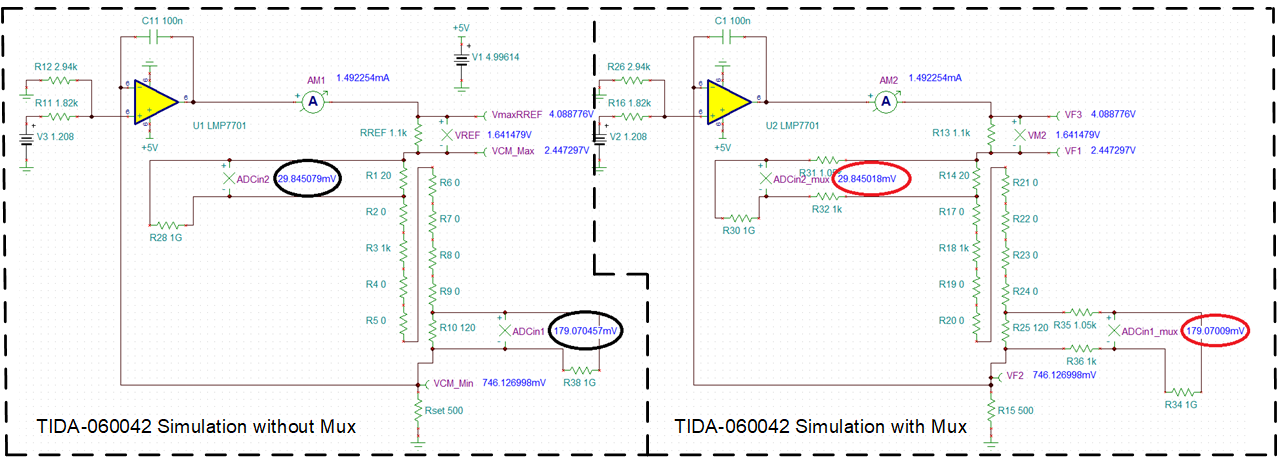TIDUF19 September 2022 ADS1282-SP
2.2.2 Analog Multiplexer Effect
Analog multiplexer (Mux) is not implemented in the design hardware, but the Mux is considered through simulation.
 Figure 2-3 Analog Multiplexer Effect
Simulation
Figure 2-3 Analog Multiplexer Effect
Simulation| Without Mux | With mux | % difference | |
|---|---|---|---|
| ADCin1 [mV] | 179.070457 | 179.07009 | 0.0002% |
| ADCin2 [mV] | 29.845079 | 29.845018 | 0.0002% |
As shown in Figure 2-3 and Table 2-2, the RTD board is simulated with and without mux, and their schematic are shown on the right and left side of the figure, along with simulation result circled in red and black. To simulate a mux, a resistor to represent the MUX on-resistance is added and set to 1 kΩ allowing 50 Ω difference between each channel. Since ADS1282-SP has one GΩ differential input impedance with PGA chopping enabled, there are only about 0.0002% difference between the two circuits output. Compare this error with the error causing by the RTD itself, the error from mux is negligible and does not affect the overall performance.